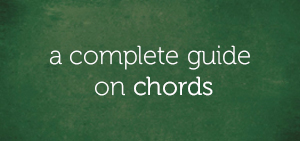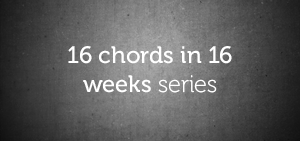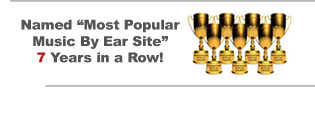For the past couple of days, I’ve been stuck on teaching you how to name chords correctly.
Today, I want to shift the focus to scales because I’ve seen many people incorrectly write their major scales.
For example, here are some common mistakes:
F# major (incorrect)
F# – G# – A# – B – C# – D# – F – F#Gb major (incorrect)
Gb – Ab – Bb – B – Db – Eb – F – GbOr worse…
F# – Ab – Bb – B – C# – D# – F – F# (the popular incorrect “hybrid” way)
Now, to be fair… and I always say it —
There’s the “I just wanna play” method and there’s the “pass a music theory test” method.
Even when I’m talking and I don’t want to say Cb or E# (because then I’ll have to explain it to the recipient and that’ll slow me down), I’m guilty of using the “I just wanna play” method. It’s not going to alter the way you play. As long as you have the RIGHT notes, it’s all going to come out the same way when played. We all know that.
But why not spell it right? That’s always my underlying philosophy when I write about these sort of things. Why settle for bad musical grammar when you don’t have to? Especially when there are easy little rules to remember…
So here are 4 simple rules to making sure your major scales are labeled correctly:
1) Always use ALL alphabet letters (if even ONE letter is missing from your major scale, it’s WRONG)
2) Never skip any alphabet letters (this one is like rule #1 because if you’re skipping something, it’s missing and that’s WRONG)
3) Never duplicate any alphabet letters (only ONE unique alphabet letter per tone… if you’re duplicating, you’re most likely skipping another letter and that means it’s _________ … you know it! …WRONG!)
4) In major scales, sharps go with sharps… flats go with flats! Don’t mix and match and you’ll be fine! (Note: Not all scales operate this way. For example, melodic and harmonic minor scales may have mixed sharps and flats, among others… but that’s another lesson).
So let’s take our incorrect scales and figure out where they have broken the rules…
F# major (incorrect)
F# – G# – A# – B – C# – D# – F – F#
In this scale, the letter “E” wasn’t used at all. That breaks rule #1. Why? Because we totally skipped it by using two “F’s.” That pretty much breaks rules 2 and 3.
That “F” is the problem. We need to use some kind of E there. All letters are required or we fail the test. What can we do the E to make it sound like F?
Answer: Sharp it! So we turn our E into E# and this helps our scale to be complete. Now we’re using all letters, and thus, not skipping or duplicating any.
Correct way
F# major (correct)
F# – G# – A# – B – C# – D# – E# – F#
*Another “unwritten rule” (not shown in my list, that is) concerns the number of sharps or flats a major scale has. Notice now that the F# major scale has 6 unique sharps (don’t include the second F# at the end). When we spelled it incorrectly, it only had 5 sharps. If you look at any “circle of fifths“ chart, you will see that F# is supposed to have 6 sharps. So we pass that test, too!
Gb major (incorrect)
Gb – Ab – Bb – B – Db – Eb – F – Gb
This scale has the same problem. We used the letter “B” twice and we skipped C altogether. Simply calling the “B” a “Cb” will solve this problem.
Correct way…
Gb major (correct)
Gb – Ab – Bb – Cb – Db – Eb – F – Gb
*And just like F#, Gb should have six unique flats. We weren’t getting that when we were spelling it incorrectly. Now we do. So spelling correctly has its benefits! :)
So remember…
There’s your “I just wanna play” method — and there’s your “pass a music theory test” method. Usually, I’m operating under the second but it depends on what my purpose is.
I know that many people read this blog… mainly people who “just want to play.” And sometimes, if I have to throw a “C flat” out there on a lesson that is focusing totally on something else — as a teacher who doesn’t want anyone to be super confused, I feel like I have to STOP and explain that “C flat” if I’m going to throw it out there… or the whole lesson is messed up from that point on because someone who has never heard of C flat will be thrown off.
So sometimes, I’m “innocently” guilty of just calling it “B” and moving on to the main meat of my lesson. But don’t worry, if I do it, I usually preface it by calling it the “informal” way.
Even I have two natures so that’s why I come from BOTH places when I’m teaching. I know some people could careless if it’s called “B,” “C flat” or “Z.” They just want to know if it’s in their major chord and if it’s going to make them sound good. And I totally understand that. After all, we teach how to play by ear and most people who fall under our category just wanna play.
So there you have it! A nice little lesson AND some insight into my teaching philosophy, too! :)
Until next time —







Comments on this entry are closed.